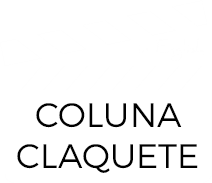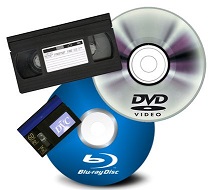How tasty was my DVD
Whenever I look for something to give to someone, I remember the times when it was enough to go to a record store and buy the last release of some famous singer. We have gone through so many developments in this area that physical media simply does not matter to most people.
I always liked technology, and only after many years did I discover the term for that, early adopter. It is that person who likes technological innovations so much that he is almost always one of the first to use it.
In fact, in the last six decades, technology has advanced with dizzying speed, and I feel privileged to have been an eyewitness to all this. A child who easily manipulates a smart phone has no idea that something like that was considered sci-fi not too long ago.
Until the late 1960s, the world was very different. The cinema had as its slogan to be “the best entertainment” and it was true, since each small town had at least one theater. The premieres took years to travel around the country, from the capitals to the most isolated corners.
Television, still at an early stage, was of poor quality, both in programming and in reach, very limited to large cities. The radio, in turn, had a huge reach, and in addition to the musical programming, it had a captive audience of radio soap operas, which ranged from “The Right to Be Born” to the adventures of “Jerônimo, the Hero of the Hinterland”.
If someone liked a song and wanted to have it at home, the way was to go to a record store and buy an LP (long-playing) or a compact disk. Different only in size, both disks were plastic crackers with grooves that were reproduced on record players. The evolution of the disc was the cassette tape, which could be played on the car’s tape player.
To get a photo, it was necessary to have a camera, buy the film, “take” the photos and then carry it to a laboratory, hoping that the film had not “burned”. The books were unbeatable on paper, and were also ubiquitous, whether in bookstores or libraries.
Computer was literally a science fiction theme. The first time I came into contact with one was in 1975, when I entered the university. At that time, everyone was elated, as they had doubled the system’s RAM, from 8 Kbytes to 16! We had to design our programs, in FORTRAN or COBOL, which were fed through punched cards and had the results in continuous form listings.
The evolution of television, with satellite transmission and later in color, was one of the factors that caused the decline of cinema. The censorship of Brazilian dictatorship also hindered national cinema and even famous productions from abroad. The arrival of the VCR was the lime shovel that emptied the theaters, which were transformed over the years into parking lots or evangelical temples.
Since I was a child I was educated to appreciate cinema and literature, two passions that I still keep today. The arrival of the VCR for me was a revelation, as the cinema increasingly decadent, and the uncertain schedule of films on TV made me very upset.
My first VCR was purchased in 1982, acquired by a person who brought from Manaus already transcoded, as the Brazilian color system was PAL/M, totally different from both the American NTSC and the European PAL.
The VCR reigned sovereignly for two decades, thanks to the profusion of rental shops that populated in all neighborhoods, most of them with pirate tapes, copied from an original one. As there was a loss in recording from one tape to another, in some copies the image was very bad.
The arrival of the DVD was a major evolution in domestic cinema. Until then, the best that was achieved was stereo sound on two channels, and an image similar to that of television. We always needed to rewind the tape at the end of the movie, and from time to time a tape with fungus soiled the head of the VCR, which was a big inconvenience!
The DVD, in turn, brought an image digitally recorded on a disk similar to a CD (the first major evolution of music). In addition to an incomparably better image, it could also have sound in six channels, multiple audio options and subtitles – in addition to not having to rewind it. The disadvantage was that, to enjoy these characteristics, it was necessary not only a good TV set, but also an appropriate sound system, called a home theater.
My first DVD player was purchased in 2000 – again with the help of smuggling. The first disks had been purchased from the American Amazon, no less than “The Matrix” (USA, 1999) and “The Mummy” (USA, 1999).
The next leap in the evolution of the films missed the right moment. Due to a format war, Blu-Ray was slow to launch. Despite having an even better image than the DVD, this increase in image needed a Full-HD television, a luxury in the first moments. Today the Full-HD and 4K models are already normal and the novelty are 8K models.
With the delay in launch, a market crammed with bootleg DVDs and the need for special equipment, Blu-Ray became a luxury good.
Today we have reached a point where physical media has become expendable. The market has several services for streaming movies, music and even books, where in exchange for a monthly fee the customer has access to a large catalog through the internet. Almost all of these services can be accessed from any platform: smart TV, computers, tablets and even smart phones.
An interesting aspect is that this new scenario practically eliminated piracy, since who will buy a bootleg DVD if can have access to an immense amount of movies in the blink of an eye?
On the other hand, this business model has turned millions of people into captive customers for various streaming services. To have an idea, during the pandemic, Netflix achieved a significant increase in subscribers. Other players have joined the market, such as Amazon Prime and Disney +, just to name a few.
All these services have become extremely comfortable for the user, although there are some disadvantages that many people do not realize. The first is a dependency on the internet – with better plans, as better quality transmissions require it. The second is related to content. The subscriber is obliged to choose what he will watch from a catalog chosen by the supplier – who can withdraw it without any explanation.
In short, today everything is digital. Movies, music, photos, books, games. No one needs to have an exclusive device for a purpose, and almost everything is multiplatform. We have at our disposal sophisticated equipment at affordable prices, capable of unimaginable things even in the recent past. On the other hand, we are dependent on the internet to the point where a simple blackout can cause great helplessness.
As I said above, I am happy to have witnessed all this evolution. But, as a suspicious Northeasterner, I still keep my favorite films on DVD and Blu-Ray, just in case.






